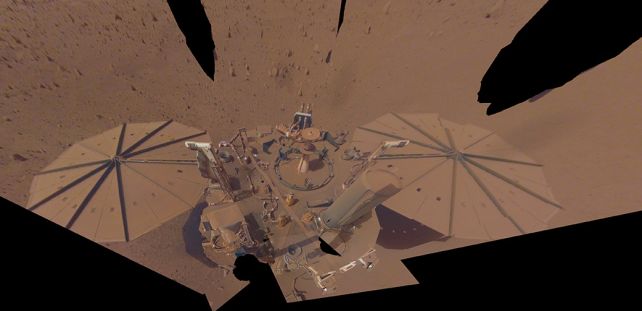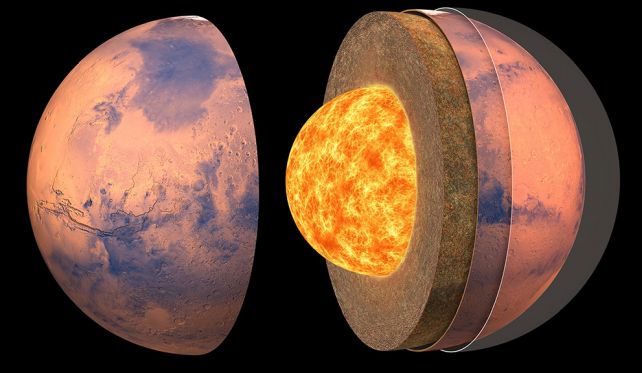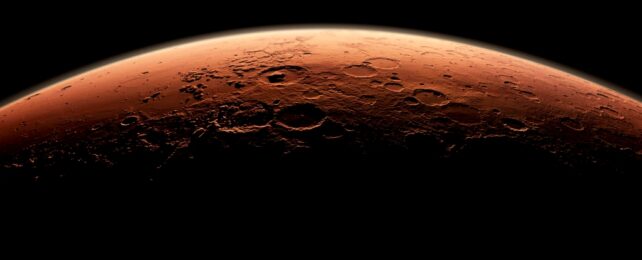Recordings of the interior of Mars have just delivered the most precise measurement of the red planet's spin yet, and the results are a confusing surprise.
According to data from the now-retired InSight lander, Mars' rotation is accelerating each year by around 4 milliarcseconds. That's a very small amount – shortening the length of a Mars day by just a fraction of a millisecond every Martian year – but the reason for it is not immediately apparent.
However, the finding could lead us to a better understanding of Mars and its past evolution. The current forerunning hypotheses explaining the acceleration are long-term trends – such as accumulating material at the polar ice caps – and interior dynamics.
"It's really cool to be able to get this latest measurement – and so precisely," says planetary geophysicist Bruce Banerdt of NASA's Jet Propulsion Laboratory. "I've been involved in efforts to get a geophysical station like InSight onto Mars for a long time, and results like this make all those decades of work worth it."

InSight ran out of power and was retired in December 2022, but the data it acquired over its four years of operations has given scientists a lot to mull over. In operation just four short years, the rover's observations of the Martian interior have revolutionized our understanding of the planet. Its seismic recordings revealed not just the interior structure of Mars, but the composition of its liquid core, and ongoing geodynamic activity.
As insightful as those measures have been, the data in the new study was not from seismic recordings, but radio communications between InSight's Rotation and Interior Structure Experiment, or RISE, instruments, and NASA's Deep Space Network on Earth.
Signals bounced between the two as Earth and Mars moved around and rotated, allowing scientists to search for subtle variations in the frequency of the radio waves that allowed them to precisely measure the rotation of Mars.
Based on 900 Martian days of Insight communications with Earth, the team found the tiny acceleration. This is likely to do with the redistribution of Mars' mass, somehow. Here on Earth, the opposite is taking place: long-term trends show that Earth's rotation is slowing down, due to a braking effect applied by the Moon, which redistributes Earth's mass by tugging at the oceans.
Mars doesn't have oceans, so something else must be taking place. Scientists will need to undertake a deeper analysis to determine the most likely cause of the acceleration.

The RISE data also allowed the team to refine measurements of the Martian core, by providing measurements of a wobble called nutation caused by fluid moving about.
Measurements from seismic data suggested that the core of Mars is between 1,780 and 1,830 kilometers (1,137 miles) in radius, which is rather large – more than half the planetary radius of 3,390 kilometers. Seismic analysis also suggested a core density of 6.2 to 6.3 grams per cubic centimeter.
The RISE data is in excellent agreement with these measurements, delivering a core radius of 1,835 kilometers and a core density of 5.9 to 6.3 grams per cubic centimeter. But the planet's nutation suggests that that density isn't evenly distributed; there are density variations in the core that will also need to be probed in future analysis.
"It's a historic experiment," says astronomer Sebastien Le Maistre at the Royal Observatory of Belgium.
"We have spent a lot of time and energy preparing for the experiment and anticipating these discoveries. But despite this, we were still surprised along the way – and it's not over, since RISE still has a lot to reveal about Mars."
The research has been published in Nature.
